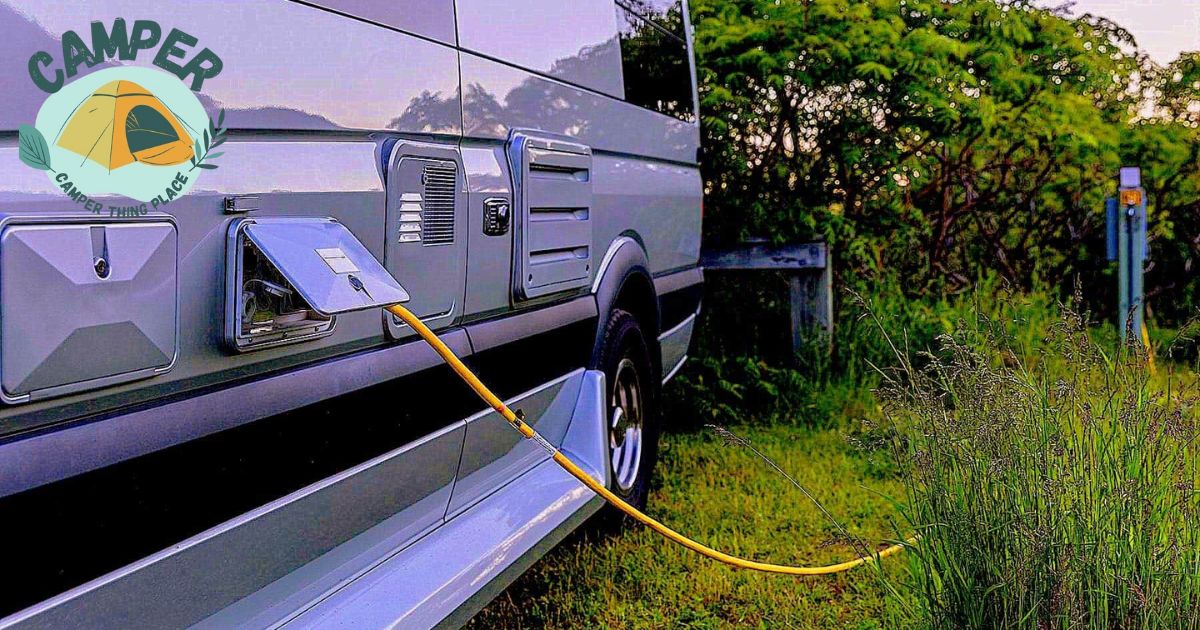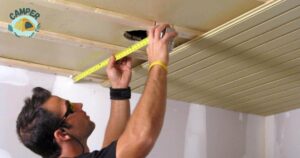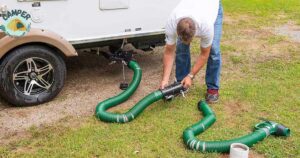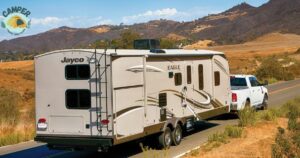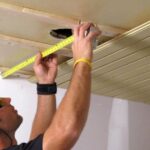RV hookups are dedicated facilities at campsites that provide essential connections for recreational vehicles. These connections typically include electricity, water, and sewer services. RV enthusiasts use these hookups to power their vehicles, access clean water, and conveniently dispose of waste during their camping adventures.
Creating RV hookups involves setting up specialized connections at campsites for recreational vehicles. So here some people ask how much it costs to install RV hookups on vacant land. First, electrical hookups are established to provide power to the RV. Next, water hookups are installed to ensure a convenient and clean water supply. Finally, sewer hookups are set up to enable proper waste disposal.
The costs for installing RV hookups vary, encompassing expenses for electrical, water, and sewer connections. Prices depend on the campsite’s infrastructure and the specific needs of the recreational vehicles. Overall, these costs contribute to ensuring a well-equipped and comfortable camping experience for RV enthusiasts.
Assessing the Land
When deciding to add RV hookups on vacant land, it’s crucial to assess the land first. Begin by examining the soil quality to ensure stability. Check for any slope or uneven surfaces that might affect installation. Evaluate the availability of necessary utilities like water and electricity nearby.
Confirm local zoning regulations and permits required for RV hookups. Consider the convenience and accessibility for RV users. Lastly, calculate the overall cost and feasibility of the project before proceeding with installation. Assessing the land thoroughly ensures a smooth and successful setup for RV hookups.
Understanding the Characteristics of Vacant Land
Vacant land varies in size, location, and topography, influencing its potential use. Soil quality, essential for stability, and zoning regulations, dictating its purpose, are crucial considerations. The availability of utilities like water and electricity plays a significant role in development feasibility.
Environmental factors, such as existing flora and fauna, contribute to the land’s distinctiveness. Recognizing these characteristics is essential for informed decision-making in utilizing or developing vacant land.
Identifying Suitable Areas for RV Hookups
When identifying suitable areas for RV hookups, consider the land’s size, ensuring it accommodates the required space. Assess the topography for flat surfaces, facilitating easier installation, especially when planning to load a truck camper.
Check the availability of utilities like water and electricity nearby for convenience. Verify zoning regulations to ensure compliance with land use guidelines.
Accessibility for RV users and proximity to amenities are crucial factors. Thoroughly evaluating these aspects helps pinpoint suitable areas for efficient and practical RV hookup installations.
Importance of Local Regulations and Zoning
Understanding local regulations and zoning is crucial for any development project. These guidelines specify how land can be used and what activities are permitted in a given area.
Compliance ensures that the project aligns with community planning goals and safety standards. Zoning regulations dictate whether the land is designated for residential, commercial, or industrial use, influencing the intended purpose.
Adhering to these rules helps avoid legal complications and ensures that the development contributes positively to the community. Overall, awareness and adherence to local regulations and zoning are essential for responsible and successful land development.
Planning the Project
Planning for RV hookups on vacant land starts with a clear vision and site assessment. Create a detailed budget and timeline, considering material costs and labor. Collaborate with local authorities for permits and zoning compliance.
Hire skilled contractors, prioritize safety, and maintain open communication. Regularly review and adjust the project plan as needed. Finally, celebrate the successful installation of RV hookups on the vacant land.
Hiring a Specialist
When hiring a specialist, define the required skills and qualifications. Craft a detailed job description and advertise the position on relevant platforms. Conduct thorough interviews to assess expertise and fit for the role.
Verify references and credentials to ensure qualifications align. Negotiate a competitive salary and benefits package. Provide clear onboarding and training for a successful start in the new role.
Importance of Professional Expertise
Professional expertise is vital for precision and efficiency in task execution. Specialized knowledge builds trust and credibility with clients and stakeholders. It enhances problem-solving skills, fostering innovative solutions. Continuous learning is key to maintaining and advancing professional expertise.
Site Analysis and Design
To establish RV hookups on vacant land, a comprehensive site analysis and design are vital. Evaluate the land’s topography, soil, and existing utilities to ensure stability and accessibility. Plan RV spaces with attention to spacing, privacy, and compliance with local regulations.
Strategically position hookup points for efficiency and minimize environmental impact. Incorporate landscaping for aesthetic appeal and environmental harmony. Regular updates to the design ensure a functional and enjoyable experience for RV enthusiasts.
Planning for Electricity, Water, and Sewage Connections
When planning for RV hookups, it’s crucial to carefully strategize the connections for electricity, water, and sewage. Assess the vacant land to determine the most efficient locations for these essential utilities.
Plan the layout to ensure easy access to electricity hookups, providing a reliable power source for RVs. Strategically position water connections for convenient access, considering the overall design and spacing of RV sites.
Also, plan for sewage connections, emphasizing proper disposal and compliance with regulations. By thoughtfully coordinating these connections, you create a well-designed infrastructure that enhances the functionality and overall experience for RV enthusiasts on the vacant land.
Allocating a Parking Spot for RVs
When allocating RV parking spots on vacant land, prioritize easy access and safety. Consider the site’s layout and topography for stable parking areas. Ensure proximity to utility connections for electricity, water, and sewage. Comply with local regulations to create an organized and compliant parking arrangement.
Materials Needed
To set up RV hookups on vacant land, you’ll need a few essential materials. First, gather PVC pipes for the sewer system and ensure they’re the right size for your RV. Acquire a durable electrical pedestal with outlets compatible with your RV’s power requirements.
Don’t forget to get a water hookup kit with a pressure regulator to ensure a steady water supply. Purchase a sturdy post for mounting the electrical pedestal and ensure it meets local code requirements.
Additionally, you’ll need gravel or concrete pads for the RV parking area. Lastly, get a post-hole digger or auger to install the necessary support posts securely. These materials will help you create a functional and comfortable RV hookup on your vacant land.
Budgeting for the Project

Planning the installation of RV hookups on vacant land requires careful budgeting. First, assess the scope of the project and list all necessary materials. Include items such as electrical supplies, plumbing materials, and equipment rentals.
Research local labor costs for hiring professionals to assist with installation. Factor in any required permits or inspections that may incur additional fees. Don’t forget to account for unexpected expenses or contingencies to ensure the budget is realistic.
Regularly review and adjust the budget as needed throughout the project to avoid overspending. Clear and accurate budgeting is crucial for the successful completion of the RV hookup installation project on vacant land.
Breaking Down Costs
To accurately budget for installing RV hookups on vacant land, break down costs systematically. Identify essential components, researching and listing prices for materials, tools, and equipment.
Factor in skilled labor costs, permits, and inspection fees. Establish a contingency fund for unforeseen expenses. Regularly review and update the cost breakdown to ensure financial accuracy. This detailed approach ensures a well-managed budget throughout the RV hookup installation project.
Specialist Fees
When budgeting for the installation of RV hookups on vacant land, it’s crucial to include specialist fees in your financial plan. Specialists, such as electricians and plumbers, bring specific expertise to ensure a successful project.
Research and obtain quotes from these professionals to accurately estimate their fees. Additionally, factor in any consultation or inspection charges that may arise.
Including specialist fees in your budget ensures that you allocate the necessary resources for skilled individuals who play a key role in the proper functioning and safety of RV hookups.
Materials Cost
Calculating materials cost for RV hookup installation involves identifying needed components, researching prices, and factoring in delivery and taxes. Regularly updating this segment of the budget ensures accuracy. This meticulous approach guarantees a well-structured financial plan for the project on vacant land.
Permitting and Inspection Fees
Allocate funds for permitting and inspection fees when budgeting for RV hookup installation on vacant land. Research local requirements to determine the necessary permits and associated costs. This proactive approach ensures compliance and avoids unexpected financial challenges during the project.
Importance of Detailed Budgeting
Detailed budgeting is crucial for the successful installation of RV hookups on vacant land. It allows for a thorough understanding of costs, including materials, labor, permits, and contingencies.
A detailed budget serves as a roadmap, preventing overspending and ensuring resources are allocated efficiently. Regular updates and reviews enhance financial control, promoting a smooth and well-managed project from start to finish.
Electricity Installation
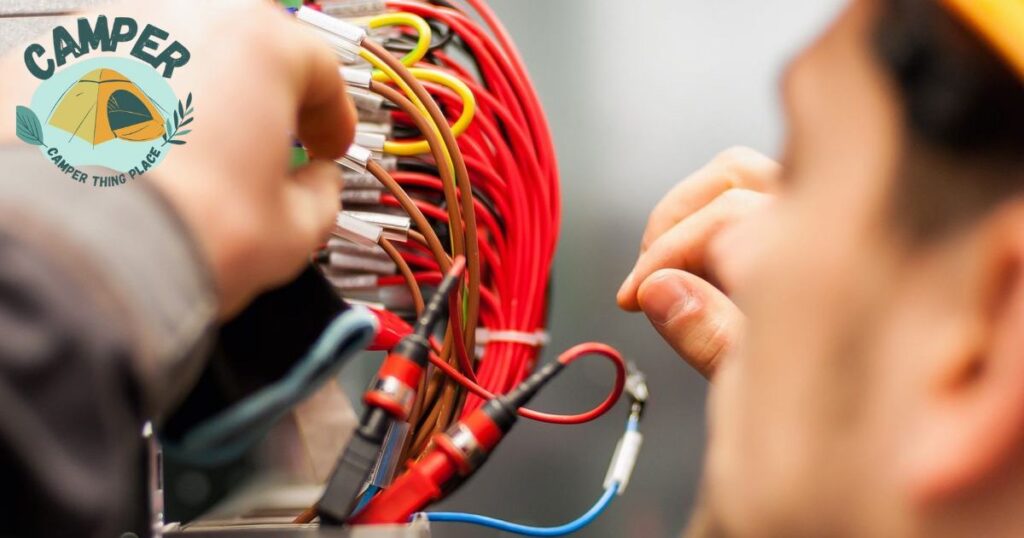
Setting up electricity in an RV on vacant land is simple. First, find a suitable spot for your RV. Then, assess the distance to the nearest power source. Next, gather the necessary extension cords and adapters.
Connect your RV to the power source, ensuring a secure connection. Double-check the voltage compatibility to avoid any issues. Once connected, you’ll have a reliable electricity supply for your RV on the vacant land. Remember to follow safety guidelines and enjoy your powered-up RV experience.
Water Installation
Installing water on vacant land is straightforward. Begin by locating a nearby water source or well. If a well isn’t available, consider bringing in a water tank. Position the tank close to your desired spot for convenience.
Connect a hose from the water source or tank to your RV’s water inlet. Ensure a secure connection and turn on the water supply. Check for any leaks and fix them promptly.
Now, you have a functional water installation on your vacant land. Providing the necessary water supply for your RV needs. Always adhere to local regulations and consider water conservation practices.
Sewage Installation
Setting up sewage on vacant land for your RV is crucial for a comfortable living experience. Begin by checking local regulations to ensure compliance. Place a portable septic tank near your RV, allowing easy access.
Connect the RV’s sewage outlet to the septic tank using a sewer hose. Ensure a secure and airtight connection to prevent leaks or odors. Periodically empty the septic tank at an approved disposal site.
Proper sewage installation promotes a clean and sanitary environment, making your stay on vacant land hassle-free. Always follow environmental guidelines to minimize impact and maintain the integrity of the land.
Parking Spot Design and Construction

Designing and constructing a parking spot on vacant land can be a straightforward process. Begin by assessing the available space and local regulations for parking requirements. Choose a location that provides easy access to the road or main entry point.
Clear the area of any debris or obstacles. Define the parking spot boundaries using markings or borders, ensuring it meets the size specifications. If necessary, consider adding gravel or pavement for a stable surface. Install clear signage to designate the parking area.
Additionally, evaluate the land’s drainage to prevent water accumulation around the parking spot. A well-designed and constructed parking spot enhances convenience and safety on your vacant land. Always adhere to zoning regulations and environmental considerations during the process.
Why Should I Install RV Hookups On Vacant Land?
Installing RV hookups on vacant land offers several advantages for those looking to use their RVs in a more comfortable and convenient manner:
- RV hookups provide access to essential amenities like electricity, water, and sewage disposal, making your stay on vacant land more comfortable and convenient.
- With RV hookups, you can potentially extend your stay on the vacant land without worrying about running out of essential resources. This is especially beneficial for those planning longer trips.
- While the initial installation may incur some costs, having RV hookups can save money in the long run by eliminating the need for frequent refills of water and propane, as well as reducing the reliance on generators.
- If you decide to sell the vacant land in the future, having RV hookups can enhance its appeal and potentially increase its value, as it becomes more versatile for different types of buyers.
- RV hookups provide a degree of self-sufficiency, allowing you to enjoy the freedom of RV living without the constant need to relocate for essential services.
- Properly installed RV hookups ensure the safe and regulated delivery of electricity, water, and sewage services, minimizing the risks associated with improvised setups.
- In many areas, using vacant land for RV living may be subject to local regulations. Installing RV hookups helps ensure compliance with these regulations, avoiding potential legal issues.
Ultimately, installing RV hookups on vacant land offers a more enjoyable and sustainable RV living experience, providing the necessary infrastructure for an extended and comfortable stay.
Frequently Asked Questions
What is the average cost of installing RV hookups on vacant land?
The cost can vary, but it typically ranges from $1,000 to $5,000.
Does the location of the vacant land affect the installation cost?
Yes, factors like accessibility and distance to utilities can impact the overall cost.
Are there different types of RV hookups, and do they have varying costs?
Yes, basic water and electric hookups are cheaper than full hookups with sewer connections.
Can DIY installation significantly reduce the cost of RV hookups?
While possible, DIY installation may not be recommended, and costs can increase if mistakes occur.
Are there ongoing maintenance costs for RV hookups on vacant land?
Maintenance costs are minimal but should be considered, including occasional inspections.
Final Thoughts
The cost of installing RV hookups on vacant land varies based on factors such as location, existing infrastructure, and desired amenities. Site preparation, electrical, water, and sewer connections all contribute to the overall expense.
Landowners must conduct thorough research, obtain accurate quotes, and consider long-term benefits when determining the budget for installing RV hookups. So here we explain How Much Does It cost to Install RV Hookups On Vacant Land? While costs may vary, investing in proper installations can enhance the land’s utility, providing a convenient and comfortable experience for RV enthusiasts in the long run.

Jackson Ray, a seasoned blogger with a decade of experience, is the creative mind behind “camperthingsplace.com.” Explore his wealth of insights and passion for camping through engaging content on the website.
